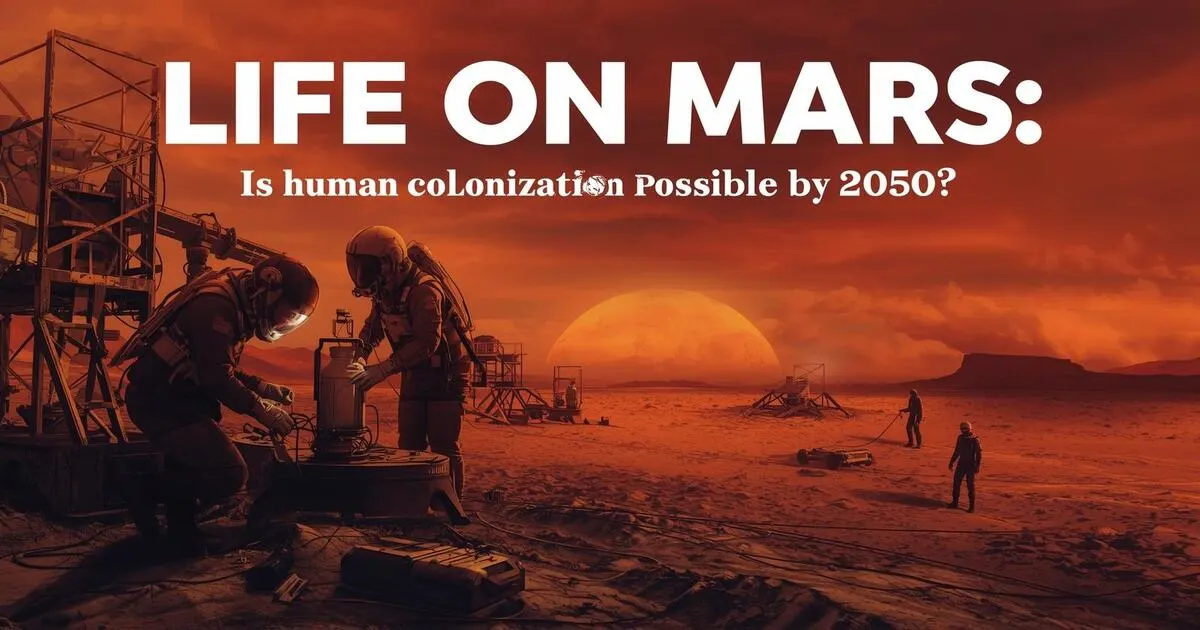Life on Mars: Is Human Colonization Possible by 2050?
Introduction
For decades, the idea of life on Mars has fascinated scientists, astronomers, and dreamers alike. With recent advancements in space technology, NASA missions, and Elon Musk’s SpaceX vision, the question is no longer “Is there life on Mars?” but rather “Can humans create life on Mars?”
In this article, we’ll explore the scientific discoveries, evidence of past water, human colonization challenges, and future missions that are shaping our understanding of Mars.
Why Mars?
Mars is considered the most habitable planet in our solar system after Earth because:
- It has 24.6-hour days (similar to Earth).
- It shows evidence of ancient rivers and lakes.
- The planet has polar ice caps that contain frozen water.
- It’s relatively close, only 225 million km away on average.
Evidence of Past Life on Mars
- NASA’s Curiosity Rover found organic molecules in Martian rocks.
- Traces of methane were detected in the Martian atmosphere, hinting at possible microbial life.
- Images suggest ancient riverbeds and lake formations.
While there’s no direct proof of living organisms, these findings make scientists believe that life could have existed billions of years ago.
Colonization Plans: NASA & SpaceX
- NASA’s Artemis & Mars Mission (2030s): NASA aims to send astronauts to Mars after establishing a permanent base on the Moon.
- SpaceX Starship (Elon Musk): Musk’s vision is to build a Martian city with 1 million people by 2050. Starship is being designed for reusable, cost-efficient interplanetary travel.
- International Collaboration: Countries like China, UAE, and India are also planning Mars missions.
Challenges of Living on Mars
- Thin Atmosphere: 96% carbon dioxide, making it impossible to breathe without support.
- Extreme Temperatures: Ranging from -125°C at night to 20°C during the day.
- Radiation Exposure: Without a magnetic field, humans will face dangerous cosmic radiation.
- Limited Resources: Water extraction, farming, and oxygen production are major challenges.
- Psychological Stress: Long isolation and distance from Earth (communication delay up to 20 minutes).
Can We Terraform Mars?
Terraforming means transforming Mars into a habitable planet.
- Proposed methods:
- Releasing greenhouse gases to warm the planet.
- Using giant orbital mirrors to reflect sunlight.
- Extracting oxygen from Martian soil and ice.
However, experts estimate that terraforming Mars could take hundreds to thousands of years.
The Future of Life on Mars
While colonization by 2050 may be optimistic, small research bases on Mars are expected in the next 20–30 years. With rapid progress in AI, robotics, and biotechnology, humanity is closer than ever to becoming a multi-planetary species.
FAQs: Life on Mars (Based on Real Search Queries)
Q1: Is there life on Mars right now?
A: No, there’s no evidence of current life on Mars, but microbial life might have existed billions of years ago.
Q2: Can humans live on Mars permanently?
A: Not yet. Mars lacks breathable air and a protective atmosphere, but future colonies with advanced technology may make it possible.
Q3: Will humans go to Mars by 2030?
A: NASA and SpaceX are working toward sending humans to Mars in the 2030s, though delays are possible.
Q4: How long would it take to get to Mars?
A: With current technology, it takes 6–9 months to reach Mars.
Q5: Can we grow food on Mars?
A: Yes, research shows plants can grow in Martian soil with added nutrients and controlled greenhouses.
Q6: Why is Mars called the Red Planet?
A: Mars appears red due to iron oxide (rust) on its surface.
Q7: What is Elon Musk’s plan for Mars?
A: Musk aims to build a self-sustaining city on Mars using SpaceX Starship by mid-century.
Credibility Sources
European Space Agency (ESA) – Mars Missions
SpaceX – Making Life Multiplanetary















